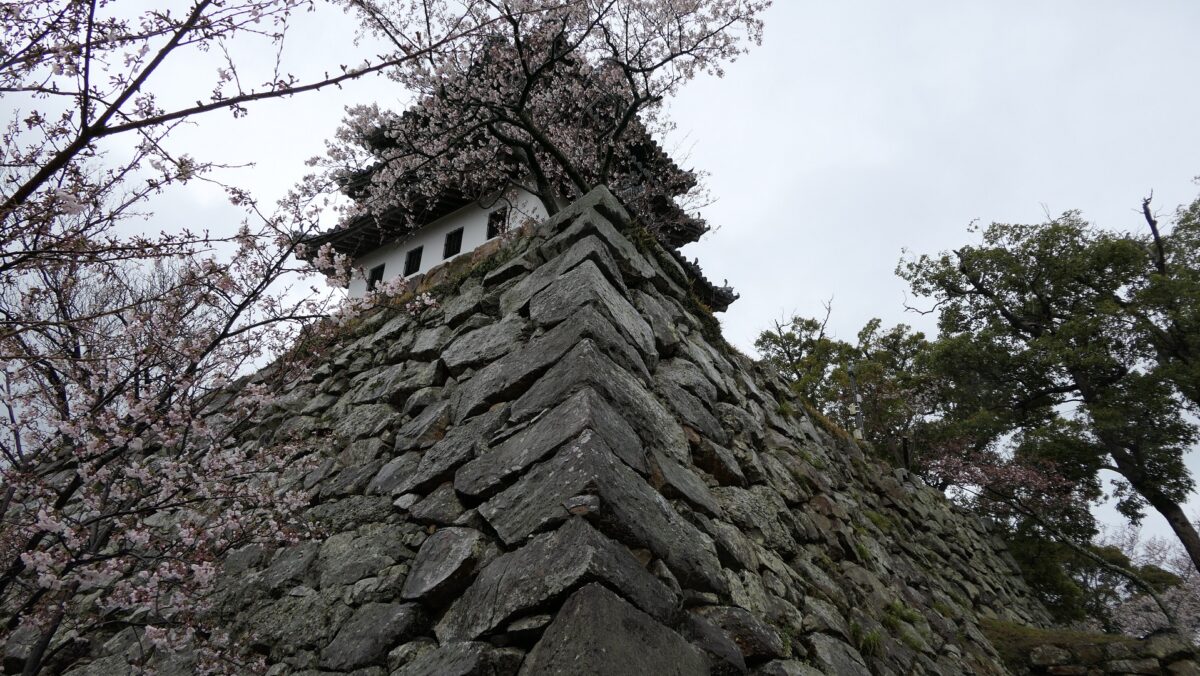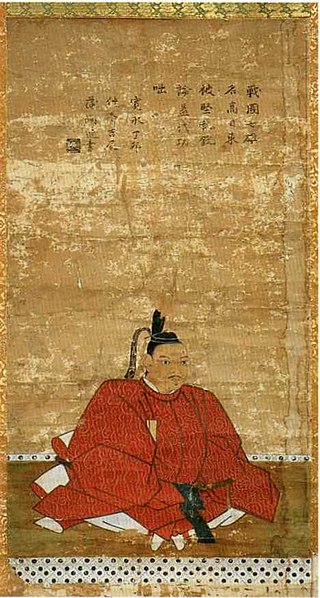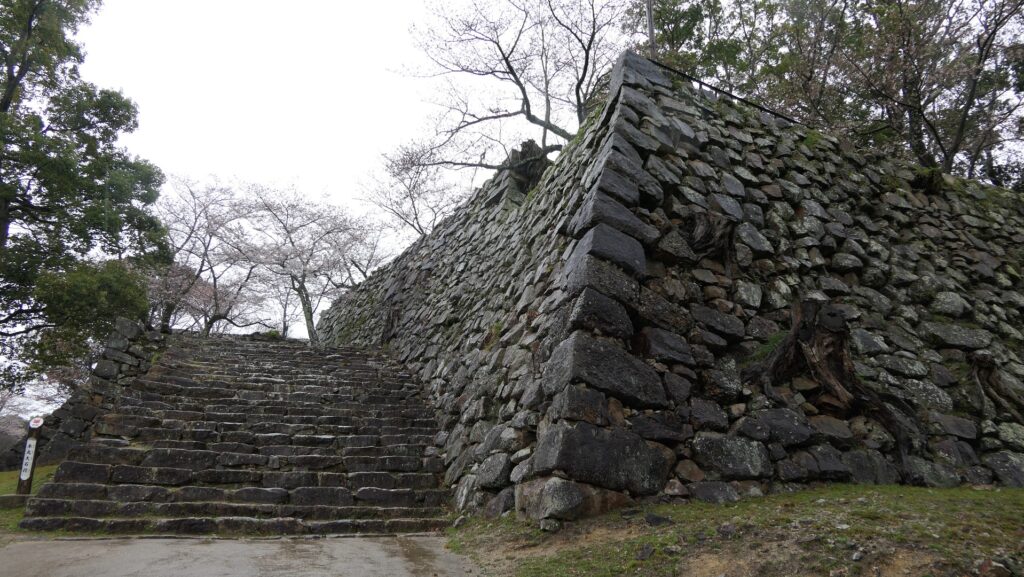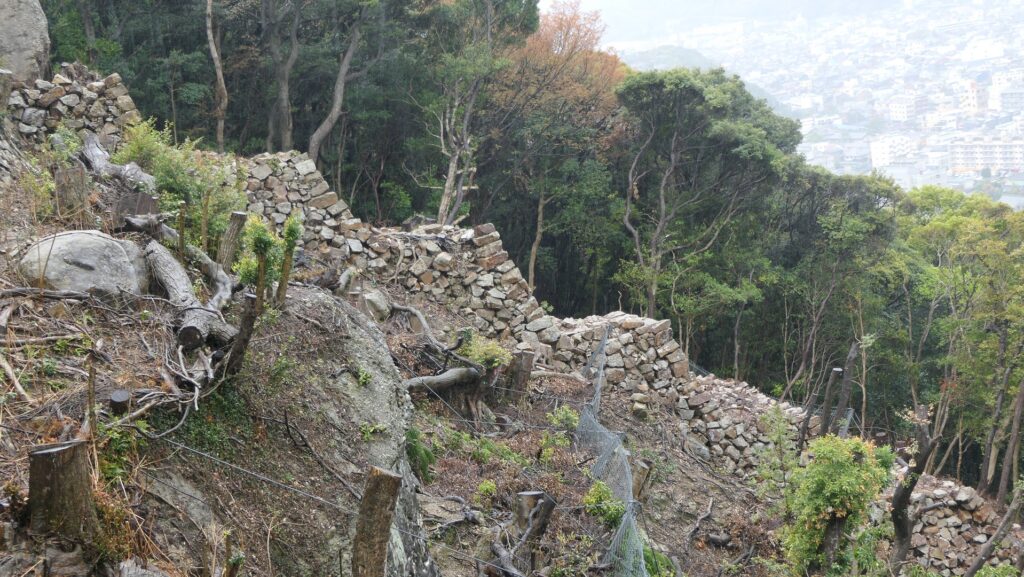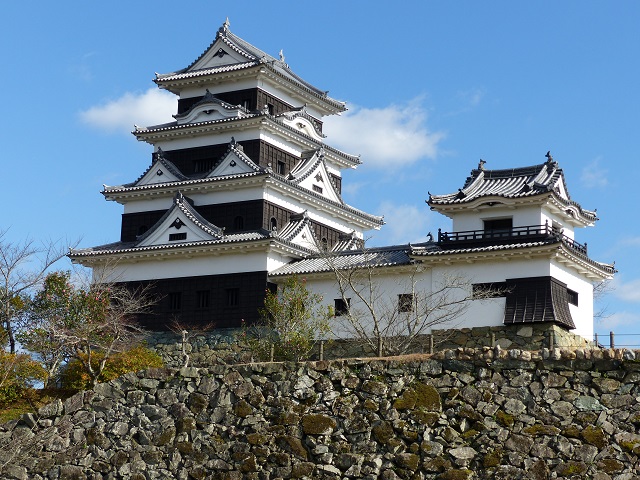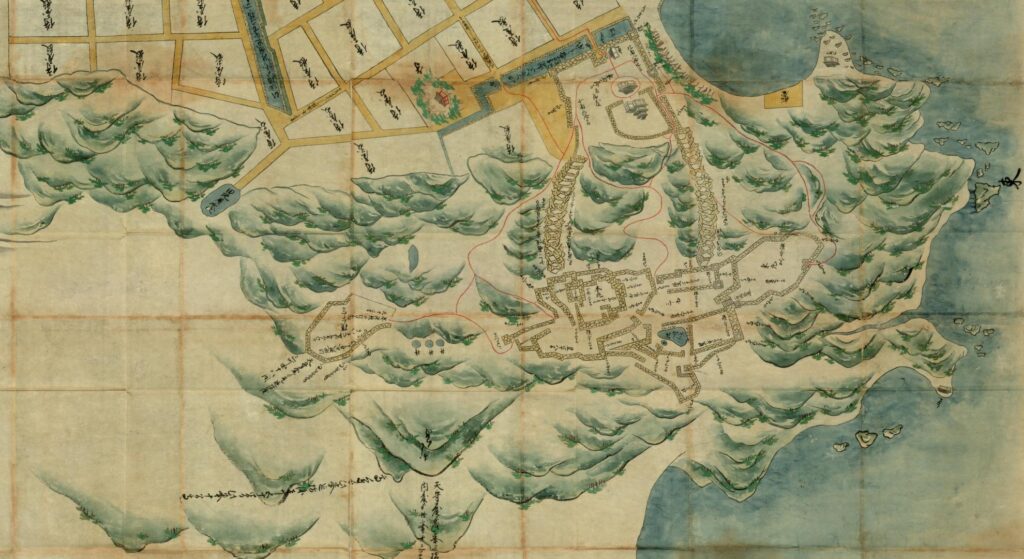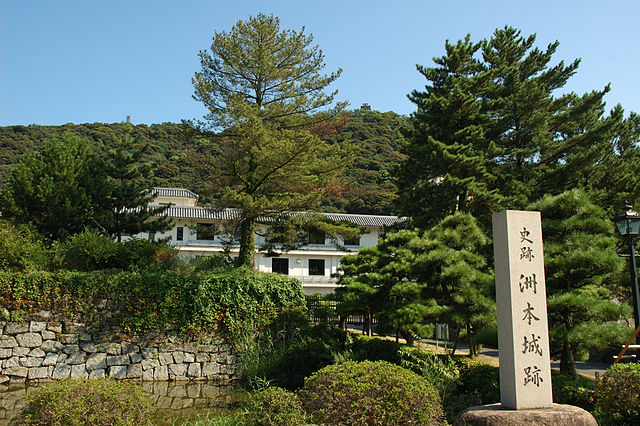Features
Castle Entrance was strictly protected
Now, the ruins of Sumoto Castle on the mountain are developed for visitors and maintain their original stone walls. If you drive to the ruins, you can easily park near the top of Mikuma-yama Mountain. The mountain has steep slopes in all directions except for the southeast direction where the diving route is on a gentle slope. For the castle, such a slope could be a weak point, so the strongest defense system in the castle was developed in this direction such as the Main Gate. In fact, the parking lot you can park was one of the enclosures called Umaya or the Stable, which protected the gate. You can also see a great view of Kii Channel to the south from here. That’s why this enclosure could have been used as an observation platform.
The map around the castle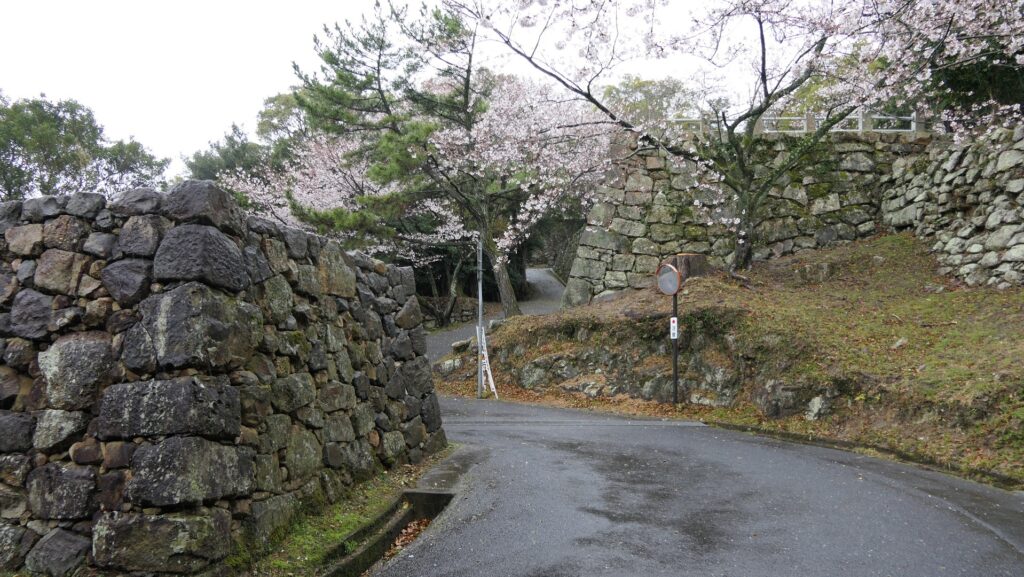
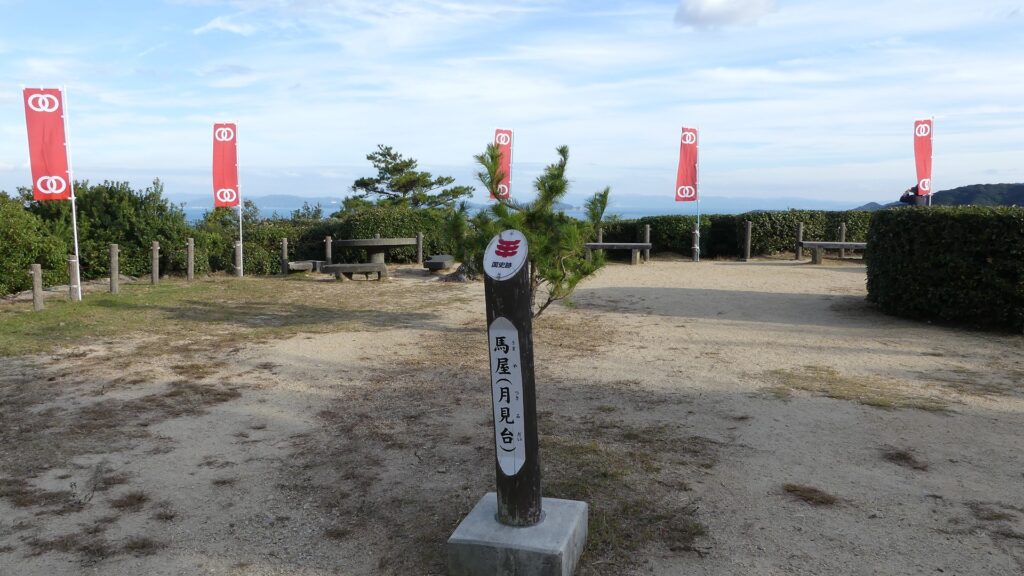

From the parking lot to the center of the castle, you will first have to walk on the narrow route along the stone walls of the Eastern Enclosure on the right, and in front of the stone walls of the Southern Enclosure. Then, you will enter the ruins of the Southern Gate of the Eastern Enclosure
The map around the castle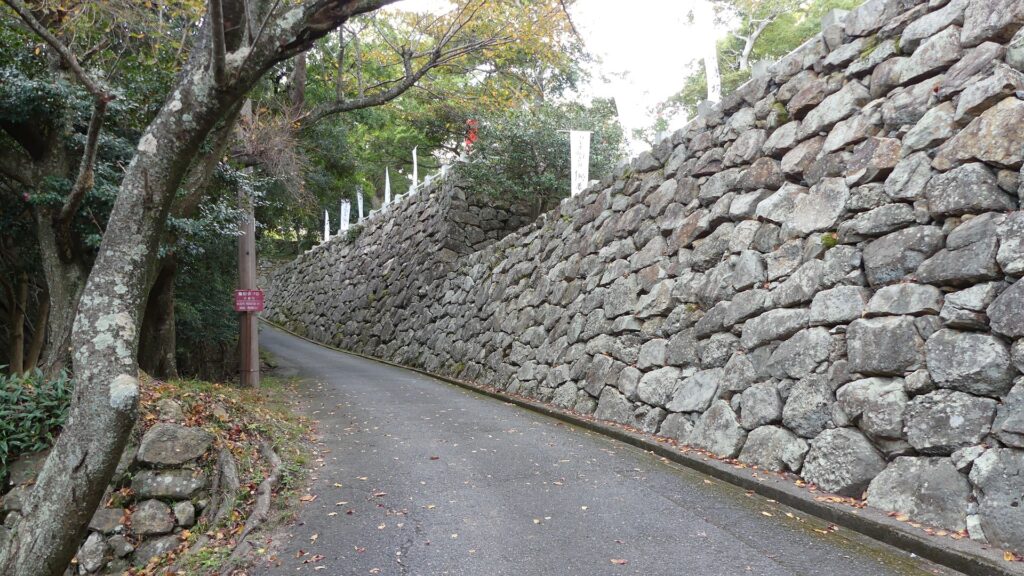
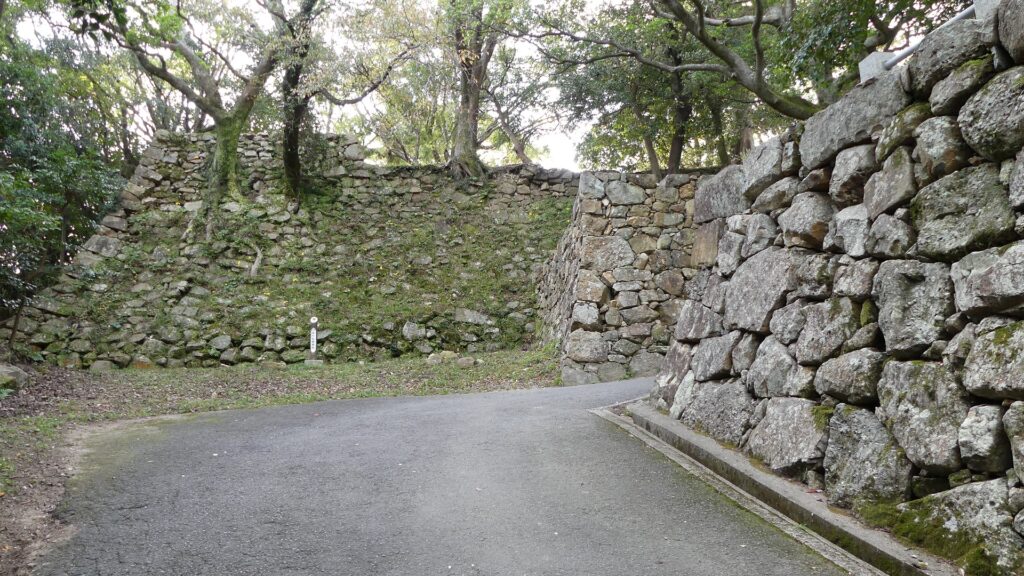
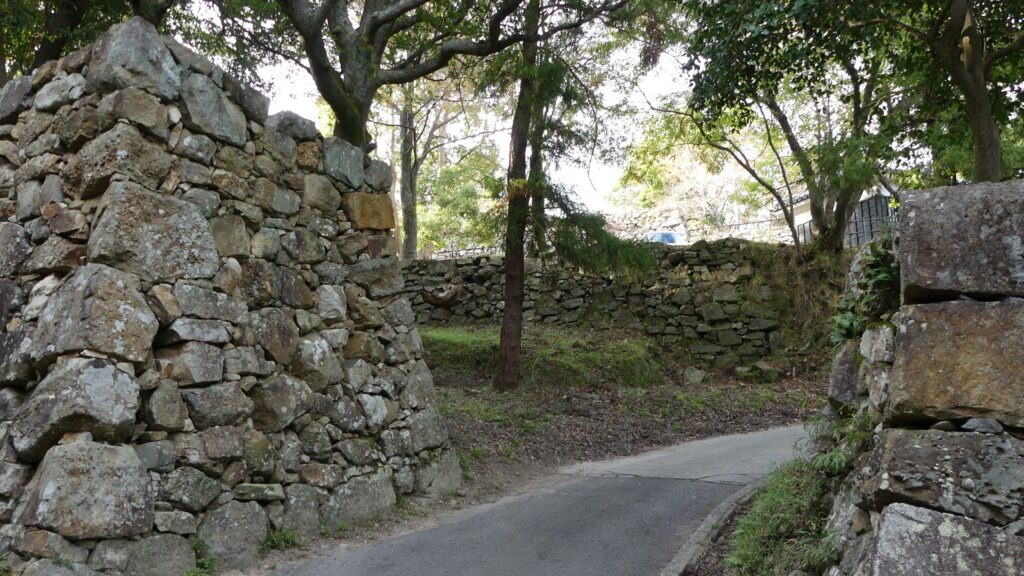
If you climb up these stone walls after entering the gate, you can clearly look down the route you passed and understand how such a system protected this spot in the past.

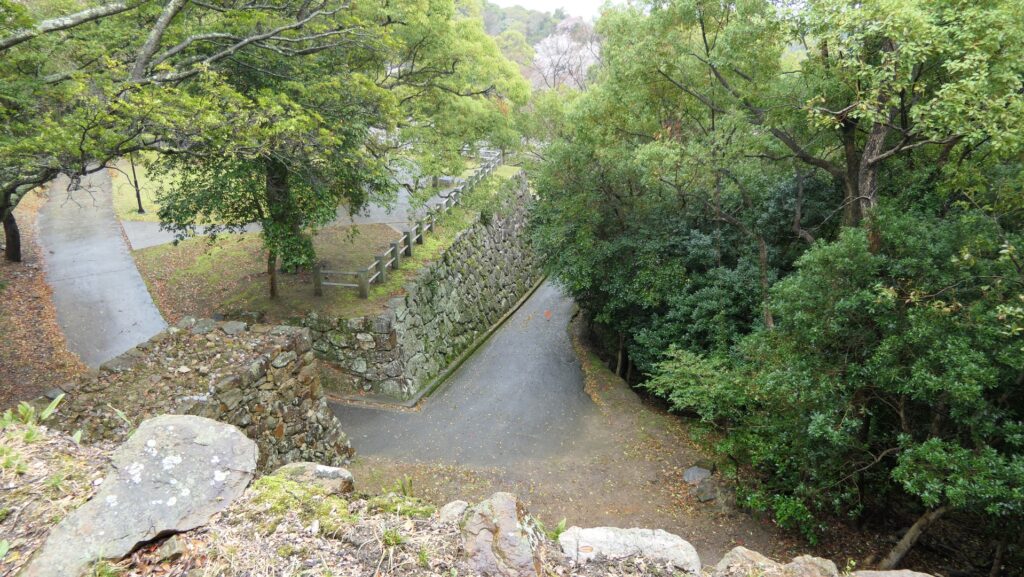
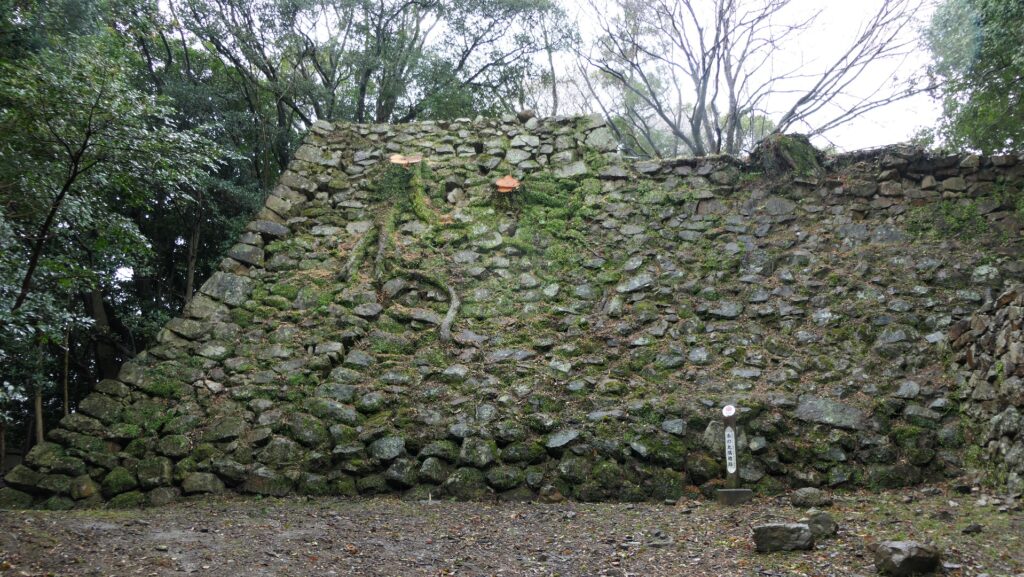
After that, you can reach the Main Enclosure by passing the Second Enclosure which is also surrounded by the stone walls.
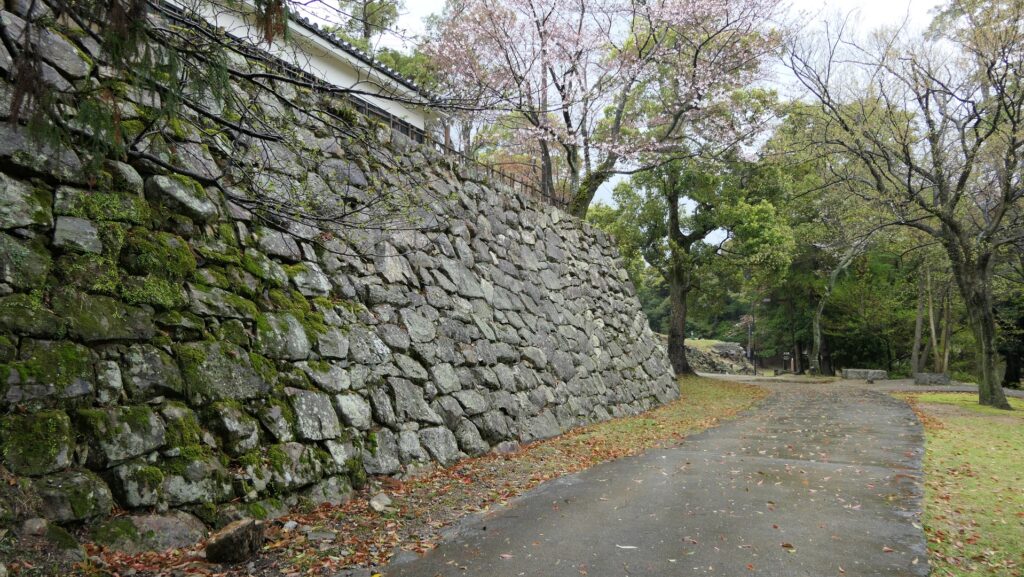

Main Enclosure, symbol of Authority
The Main Enclosure has the greatest and highest stone walls in the castle. It has the front side in the south with the Large Stone Steps and the front entrance called Koguchi. The entrance has a square space inside surrounded by the stone walls, which is also called Uchi-Masugata. You can also climb up the surrounding stone walls and look down the entrance and see the shape of the square space. It is thought that a turret gate building was built on the stone walls, which made the entrance more defensive and displayed the authority of the lord.
The map around the castle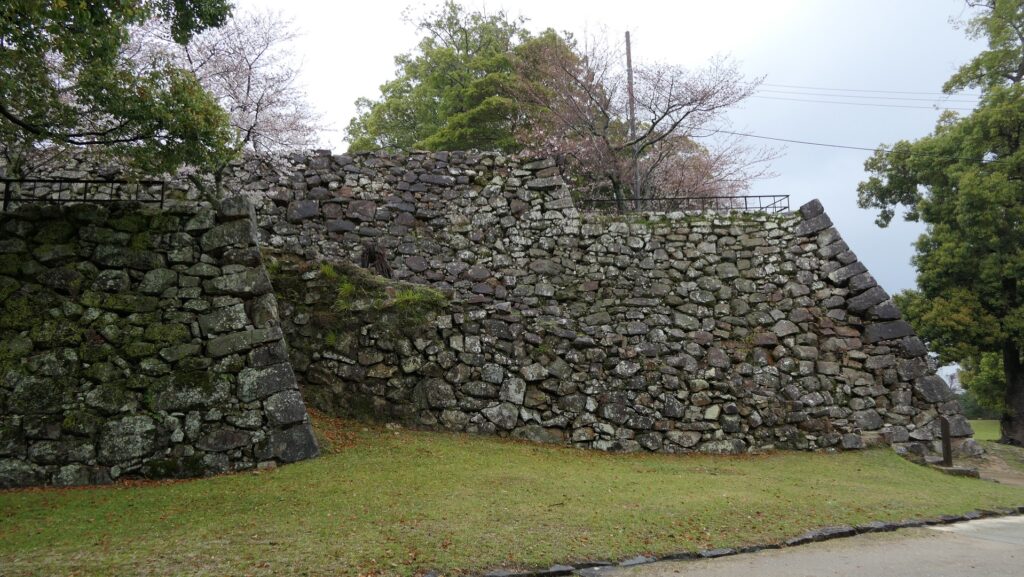

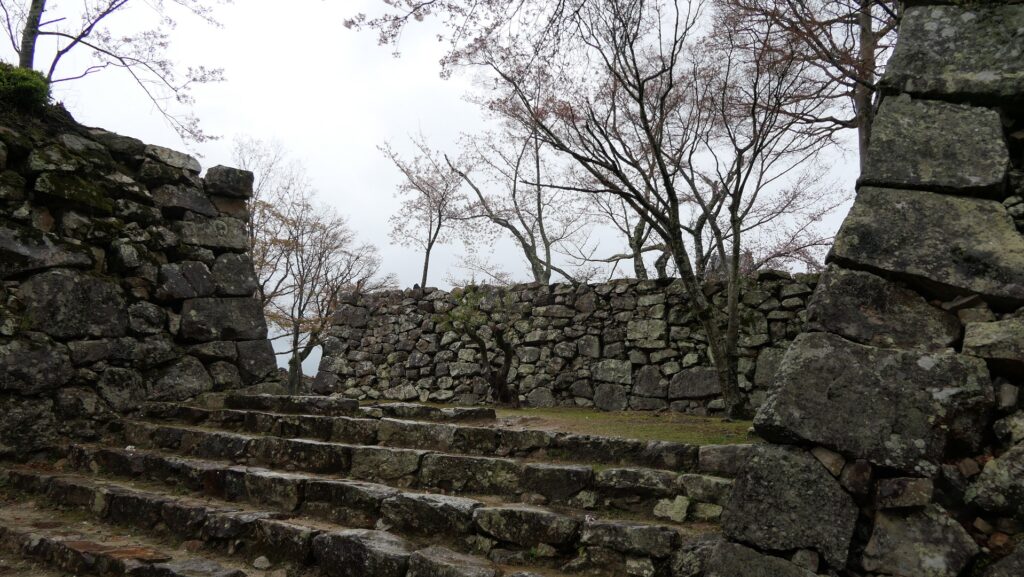
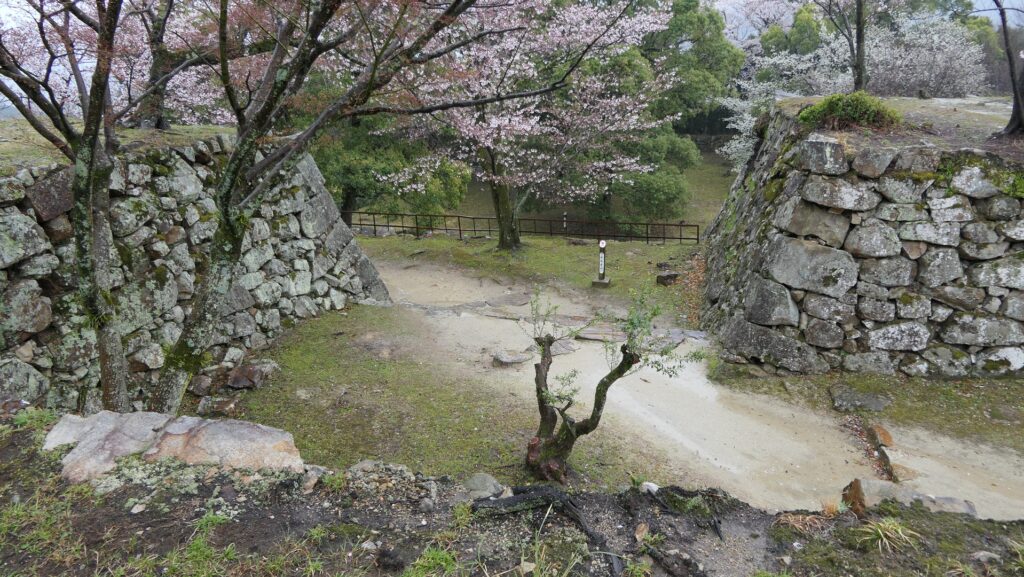
Imitation Main Tower, Symbol of Present Castle
The Main Enclosure also has the imitation Main Tower on the original stone wall base for the Main Tower. It was built to celebrate the enthronization of Emperor Showa in 1928 as a modern observation platform. However, it cannot be used for observation now because it has aged and could prove to be quite dangerous. Therefore, it is used as just a symbol of the castle or a landmark of the city. You can even see a great view of Sumoto city area – the former castle town, and Osaka Bay to the north under the tower. You will once again understand why this was a good location for the castle, which served to protect it and overlook the area around.
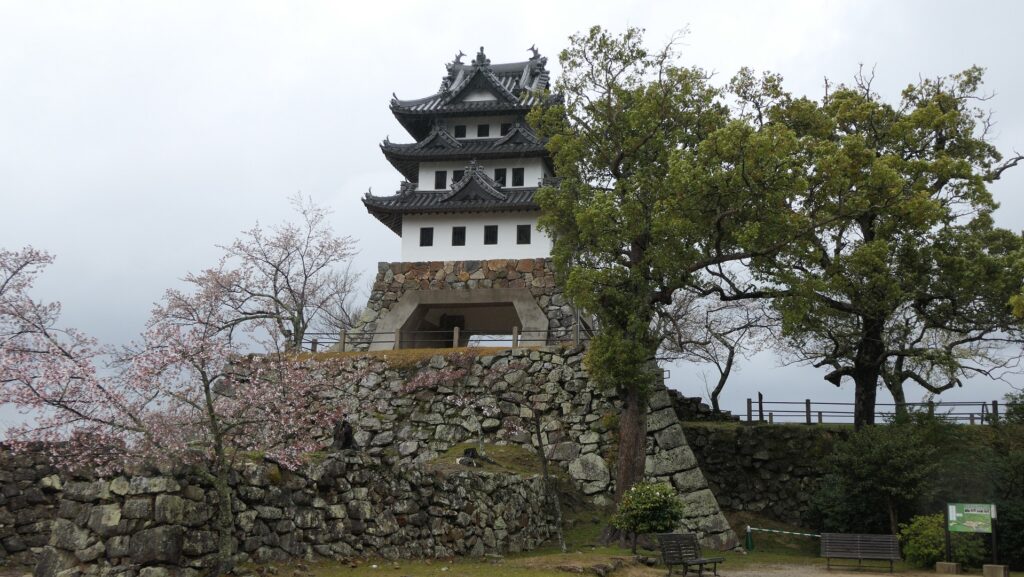

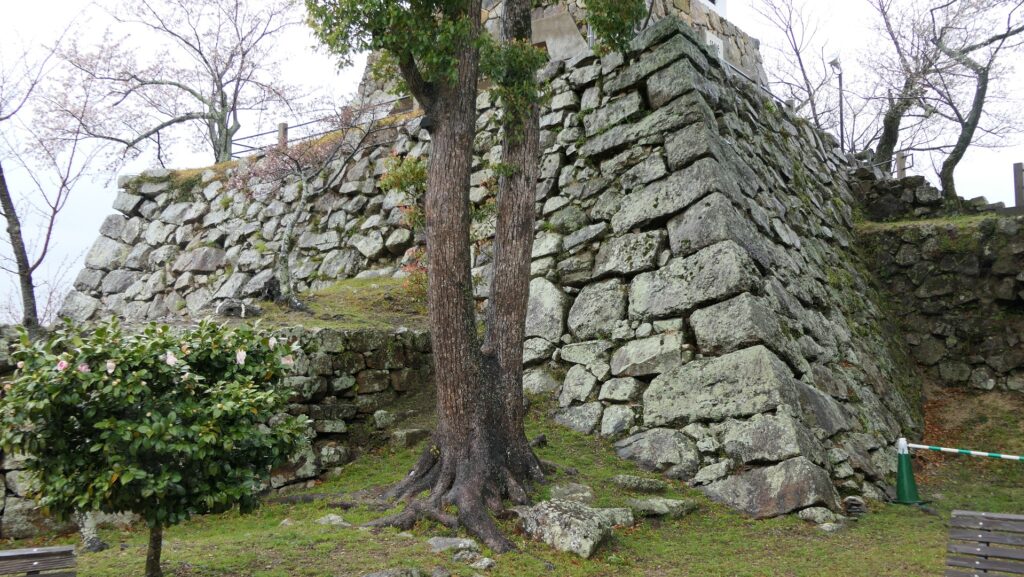
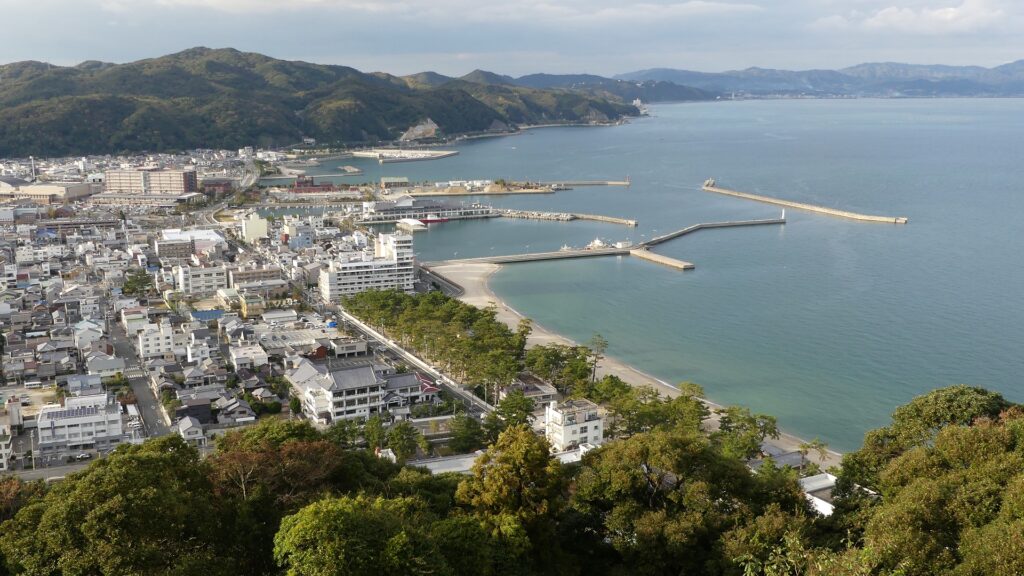
To be continued in “Sumoto Castle Part3”
Back to “Sumoto Castle Part1”

